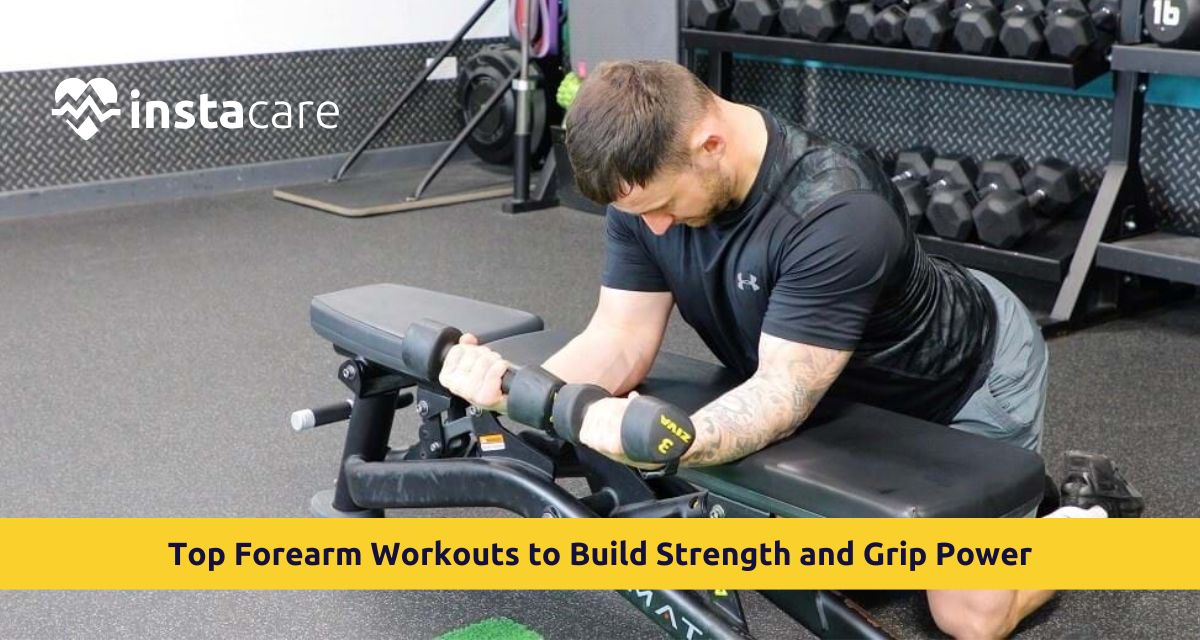People often overlook it, yet building up your forearms doesn't just make arms look better, it actually ramps up grip power, helps you lift heavier, while also making everyday arm use smoother. Adding in these exercises at any level, just starting out or already pushing limits, not only builds toughness, keeps muscles going longer, but reduces the chance of getting hurt.
Even so, research shows people with strong forearms tend to do well in sports such as climbing, lifting weights, or practicing combat moves. On top of that, working out your forearms can come in handy, whether you're hauling bags from the store or opening a stubborn jar lid.
Anatomy of the Forearm
Understanding forearm muscle anatomy can make your exercises hit better. There's a pair of main muscle sections in that area:
- Flexors: Muscles you use when gripping or bending your wrist. These sit on the inside part of your lower arm, right where your palm faces. They activate every time your fingers close or your hand tilts down.
- Extensors: The extensors form a set of muscles on the outside back side of the forearm; these help straighten the wrist while also keeping the hand steady.
Another key group helping with rotation, while boosting grip power, involves the brachioradialis, along with pronator and supinator muscles. Train them right, so they work together smoothly, stay safe from harm, while growing evenly.
Benefits of Forearm Workouts
Working your forearms brings a bunch of perks - like these ones.
- Improved grip strength: That power carries over to lifting weights, doing pull-ups, or pretty much any sport out there.
- Sturdy wrist support: This lowers the chances of hurting your wrist or elbow with wrist strengthening exercises.
- Better-looking arms: Solid forearms balance out the upper arm muscles.
- Functional strength: Makes daily tasks easier, especially when your hands are involved.
Strong forearms boost stamina - so whether you're pulling heavy weights off the ground or climbing up a rock face, you'll last longer. A tougher grip means less
fatigue when pushing through demanding sets.
Best Forearm Exercises (Gym or Home)
The next workouts work well for your forearm muscles, many don't need much gear at all.
Best forearm exercises include:
- Inner forearm exercises - Wrist curls using dumbbells work the inside part of your forearm
- Outer forearm workouts - Reverse wrist curls hit the outside part of your forearm muscles
- Forearm workouts with dumbbells - Hammer curls work the brachioradialis; this muscle adds bulk to your forearms, so they look stronger; doing them regularly brings clear changes
- Farmer's Carry: Effective for boosting hand-held power and lower arm stamina
- Plate pinches: They build finger strength using just your fingertips to hold onto weight plates
- Barbell reverse curls: Work both the muscles that bend and those that straighten your forearms
Pick lighter or medium weights at first, go for 3 to 4 rounds of 12–15 moves, then slowly ramp up the challenge as you get stronger.
Forearm Workouts Without Equipment
You don't need a gym pass to get strong forearms. Try these forearm workouts without equipment, no gear needed, they hit the same muscles just as well.
Calisthenics forearm exercises:
- Fingertip push-ups: Build up your grip muscles, using just fingertips adds tension that shapes forearm strength over time
- Towel twisting: Gives your wrists a bending spin-like move
- Wrist circles: Spin your wrist around while stretching out your arm - this motion makes a loop. Instead of straight moves, go round in small loops using just one hand at a time
- Fist clenches: Squeeze your fists tight, keep it for half a minute or so
- Pull-ups or bar hangs: Help your hands stay strong when holding tight; they train stamina so you don't let go too soon
Doing these workouts helps beginners build a solid foundation. After that, you could move on to using dumbbells or try working with resistance bands instead.
Sample Forearm Workout Routines
This forearm workout fits all skill stages. It works whether you're just starting out or have been training awhile.
Forearm workouts for beginners:
- Wrist Curls – 3×15
- Reverse Wrist Curls – 3×15
- Fingertip Push-Ups – 3×10
Intermediate:
- Dumbbell Hammer Curls: 4×12
- Farmer's Carry - 4×30 sec
- Plate Pinches – 3×20 sec
- Barbell Reverse Curls: 3×12
Advanced:
- Wrist Roller – 4×1 min
- Pull-Ups (Hanging Grip) – 4×8–10
- Band curls and stretches – 3 sets of 15
- Twist the towel hard – hold 30 seconds, 3 rounds
Hit this routine twice or thrice weekly to build strength fast.
Training Tips for Better Results
Try these tricks whether you're working out solo or in a gym.
How to build bigger forearms:
- Progressive overload: Push harder over time - use heavier weights or more tension
- Full range of motion: Move your wrist all the way up and down each re`p
- Consistency: Stick with it every week - but don't overdo it
- Mind-muscle connection: Pay attention to your forearm muscles - try tightening them while doing each move whenever you can
This plan mixes different moves targeting the inner forearm, outer forearm, or grip power so everything gets worked evenly.
Common Mistakes to Avoid
Watch out for these errors if you want solid progress and fewer injuries:
- Lifting too much weight might hurt your wrists
- Skipping work on the extensor muscles leads to uneven growth
- Training forearms nonstop without rest slows gains
- Neglecting forearm workouts - like bodyweight moves for grip power
- Poor form when curling, rolling, or pushing up
Nutrition and Recovery
Food and rest matter most. Focus here:
Nutrition:
- Protein from chicken, eggs, or plants helps repair muscles
- Healthy fats from nuts and seeds support tendons and joints
- Hydration helps muscles work better while cutting down on tiredness
Recovery:
When you rest, forearms bounce back quickly, yet waiting two full days after hard workouts makes sense
Try wrist stretches along with foam rolling - they add value to your plan by easing stiffness and boosting mobility
Conclusion
Solid forearm strength comes from smart workouts, sticking to a schedule, plus paying attention to recovery. Use dumbbells, forearm workouts with resistance bands, or just your body weight; focus on both front and back arm muscles to stay strong in action and sharp in look.
Start off with simple moves, try wrist curls or reverse ones first, after that move on to tougher grip-focused drills. Don't skip forearm workouts at home either; it keeps things fresh. When you've got a solid routine in place, growing stronger forearms and steadier wrists becomes totally doable, boosting your whole game.
Please book an appointment with the
best Physiotherapist in Lahore, Karachi, Islamabad, and all major cities of Pakistan through
Instacare, or call our helpline at 03171777509 to find a verified doctor for your disease.

